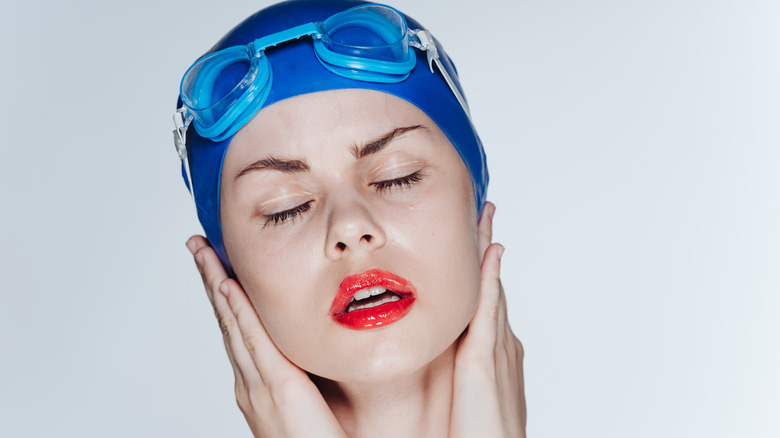What Is Swimmer's Ear And How Painful Is It?
Swimmer's ear is a bacterial infection that is usually caused by water that has stayed in the outer ear canal for a long period of time (via Centers for Disease Control and Prevention). This creates a moist environment for the bacteria to grow. Anyone can get swimmer's ear, or otitis externa, but it is more common in children. The condition cannot be transmitted from one person to another.
According to the Mayo Clinic, early symptoms of swimmer's ear can include itching in the ear canal, slight redness in the ears, discharge, and mild discomfort that worsens with tugging the outer ear or pushing on the small part of the outer ear that sticks out in front of the ear canal (called the tragus). These symptoms can intensify over time. If the infection has progressed to advanced stages, the pain may become so severe that it radiates to the face, neck, or side of the head. Fever, redness or swelling of the outer ear, swelling in the lymph nodes in the neck, and complete blockage of the ear canal may also occur.
Most cases of swimmer's ear are treated with prescription eardrops. You should call your doctor even if you have only mild symptoms, as you may require treatment. And if you're experiencing symptoms along with fever or severe pain, head to your local emergency room.
How to prevent swimmer's ear
A good way to prevent swimmer's ear is to keep ears as dry as possible. Wear a bathing cap or ear plugs when going swimming. To dry your ears after swimming or showering, tilt your head to each side so water can drain out (via Johns Hopkins Medicine). It can also be helpful to pull your earlobes in different directions while your ear is facing down. Use the edge of a towel to gently dry your ears. If there's still water in your ears, consider using a hairdryer on the lowest or coolest setting, holding it at least 12 inches from your ear, and waving it back and forth.
Never put foreign objects in your ear canal — including cotton swabs, paperclips, pencils, or hairpins — in an attempt to scratch an itch or remove earwax. These items can push your earwax deeper into the ear or irritate the delicate skin there. In fact, it's best to leave earwax alone, as it helps protect the ear canal from infections. Finally, look out for signs alerting swimmers to high bacterial counts and stay out of the water on those days.


